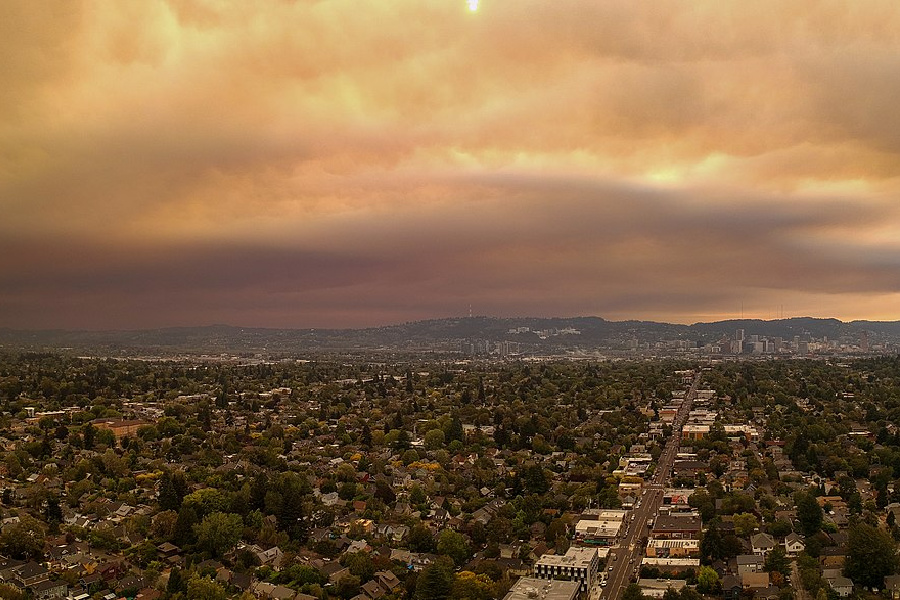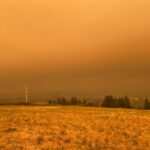More robust tracking is measuring API levels across Oregon as wildfire seasons continue to worsen.
Even in relatively low smoke seasons, wildfires are having adverse effects on the health of Oregonians, according to a report released this week by the Oregon Department of Environmental Quality.
The report, Wildfire Smoke Trends and the Air Quality Index, which was released Monday uses data from the DEQ’s air monitoring stations and other sources to assess the effect of wildfire smoke on public health in 2022. Among its key findings:
- 2022 saw less smoke than previous wildfire seasons, but the amount of smoke Oregonians experience in summer has trended upward over the past decade.
- Late-season fires caused unhealthy air quality into October for much of Oregon.
- The Cedar Creek Fire burned 127,000 acres from August to October.
- The Rum Creek Fire in Josephine County burned 21,000 acres and the McKinney Fire in Northern California burned more than 60,000 acres, causing smoky conditions in southwestern Oregon in August and September.
- Central and southern Oregon saw the most adverse effects from wildfires in 2022.
- Oak Ridge in Lane County saw the worst air quality in 2022 with 37 days of “Unhealthy for sensitive groups” and “hazardous” days.
The report shows the days of unhealthy and hazardous air quality are on the rise. Historically, wildfire season started in late July and lasted till early September. But recent years have seen the season extend from mid-July till early October.
The last decade has seen increasing wildfires across Oregon, both in size and duration.
Oregonians have become more familiar with air quality index (AQI) levels, checking the number and color—ranging from green (healthy) to burgundy (hazardous)—to gauge whether or not it’s safe to be outside.
Wildfire smoke releases a wide variety of pollutants, including black carbon, nitrogen dioxide, carbon monoxide, volatile organic compounds, polycyclic aromatic hydrocarbons and metals. Those pollutants are measured as particulate matter: PM2.5 and PM10. PM2.5 is especially harmful to human health because it can be breathed deep into the lungs and may even reach the bloodstream. AQI is calculated using PM2.5 measurements. Exposure to particulate matter can cause coughing and difficulty breathing, and aggravate existing conditions like asthma.
The DEQ uses Federal Equivalence Method (FEM) monitors to continually measure PM2.5 levels across the state. These monitors are installed in places like parks and schools. They take measurements automatically, but must be checked regularly by DEQ scientists for calibrating and maintenance.
There were 60 air quality monitors in place across Oregon in 2022. Susan C. Mills, DEQ public affairs specialist, says the DEQ is increasing that number each year. Measurements from those monitors are available to the public in real time.
Oregon Business asked Mills if any changes have been made to monitoring for the 2023 season. She says they’ve transitioned from filter-based sampling every one to six days to continuous monitoring at PM2.5 monitoring locations required by the EPA. Also, the AQI database is now being stored in the cloud, rather than a server in Hillsboro, which will “make it more robust and less likely to break down when thousands of people are using it.”
The DEQ’s monitoring system has doubled in size across Oregon over the past five years, and they’re working closely with communities to place monitors in locations that need them. For example, there are now monitors along the coast, in places like Brookings, Coos Bay and Tillamook.
The report highlights the number of unhealthy days before and after 2015 for 4 metro areas: Bend, Medford, Klamath Falls, and Portland. Before 2015, Klamath Falls had 20 unhealthy days. From 2015 to 2022, there were 61 unhealthy days from wildfire smoke. Portland had never seen unhealthy days prior to 2014 (since measurements have taken place). “From 2015 to 2022 [Portland] had seven unhealthy, three very unhealthy, and five hazardous days from wildfire smoke.”
Mills says the report shows the trend in longer, more intense fire seasons continuing. The DEQ offers a variety of resources for tracking and protecting yourself from poor air quality in Oregon, including instructions on a DIY air filter and the free OregonAIR app which can be downloaded to your smart phone for AQI updates once an hour.
The DEQ’s report comes as wildfire smoke from eastern Canada drifted downward, affecting air quality in much of the Northeastern United States, with New York City recording an AQI of 158, considered unhealthy for all groups, by midday Wednesday.







